Do you have any idea that opening an email can send so much data back to its sender? It can. Counting when you opened it, how frequently you opened it, where you were the point at which you opened it, and substantially more. Like Apple iMessage and Facebook Messenger receipts, emails can share point-by-point data regarding when a recipient views a message and their activities. If you need to keep your email private, follow this aide to stop email tracking.
What we will see here?
How are emails tracked?
Tracking pixels are typically a single and frequently invisible 1×1 image inserted into an email’s header, footer, or body. You most likely won’t see them, yet the pixels load when you open the message and feed information back to the sender, allowing them to follow you. By utilizing these tracking pixels, marketing companies are exploiting the way that many email suppliers permit remote images to be stacked as a matter of course.
Pixels are perhaps the most famous method for tracking an email. A little image, the size of a solitary pixel, is regularly attached to the email’s end. At the point when your email customer loads the image, your email service should recover it from the sending server. This server can then log in when your email service loaded the picture to get when you opened the email. Extra data, for example, your IP address, can make the server aware of where you were found when you opened the email.
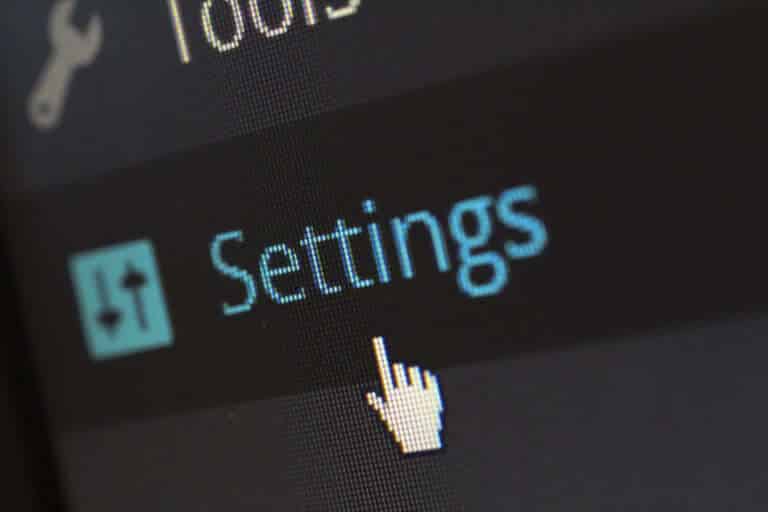
How can you stop email tracking?
To quit tracking, the least demanding choice is to disable your email client from naturally downloading pictures. Along these lines, the sending server can’t load its tracking pixel. There are likewise browser extensions that can dissect your web-based emails and alert you if there is a tracker in the information.
If you need to keep your email customer from downloading images that are remembered for emails, you’ll follow different steps as per your provider.
For Gmail.com
- Sign in to your Gmail account.
- Enter on the gear symbol in the upper right corner.
- Select the General tab.
- Look down to the Images category and hit the Ask Before Displaying External Images.
- Look down and enter the Save Changes.
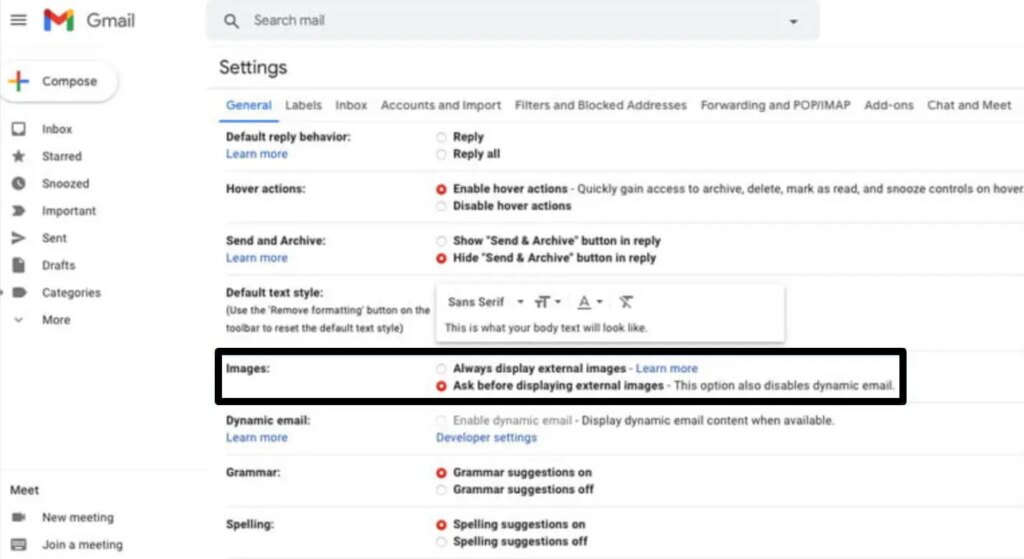
Microsoft Outlook.com
While the browser-based variant of Outlook doesn’t allow you to quit loading images, you can make it load images through its own service. To enable that:
- Hit on the “Settings” (the gear image in the upper-right corner). In the segment that opens, select the “View all Outlook settings” at the base.
- Select “General” choice, then, at that point, hit the “Security and information.“
- In “External images” hit on the “Always use the Outlook service to load images.”

Microsoft Outlook (Office 365) for Windows 10
- Click on the “File” choice and hit on the “Options.”
- “Outlook Options” window appear, then, select the “Trust Center” option.
- Enter on the “Trust Center Settings” button.
- You will view these :
- “Don’t download pictures automatically in standard HTML email messages or RSS items” and “Don’t download pictures in encrypted or signed HTML email messages.”
- You can make various exemptions for the principal thing, if you like, by looking into the boxes under it.

Microsoft Outlook (Office 365) for Mac
- Go to the “File” choice.
- Hit the “Preferences” choice, then, select the “Reading.”
- You can decide to naturally download images just from trusted contacts or to disable all automatic downloads of images.
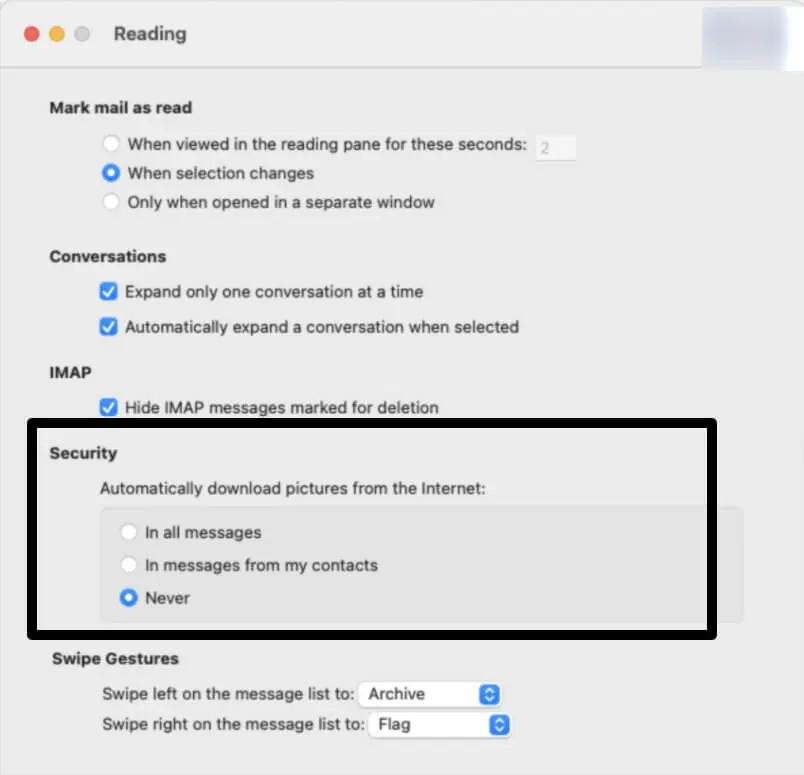
Apple Mail
- Select the “Mail“.
- Select the “Preferences” choice.
- Hit on the “Viewing” tab.
- Uncheck the “Load remote content in messages.”
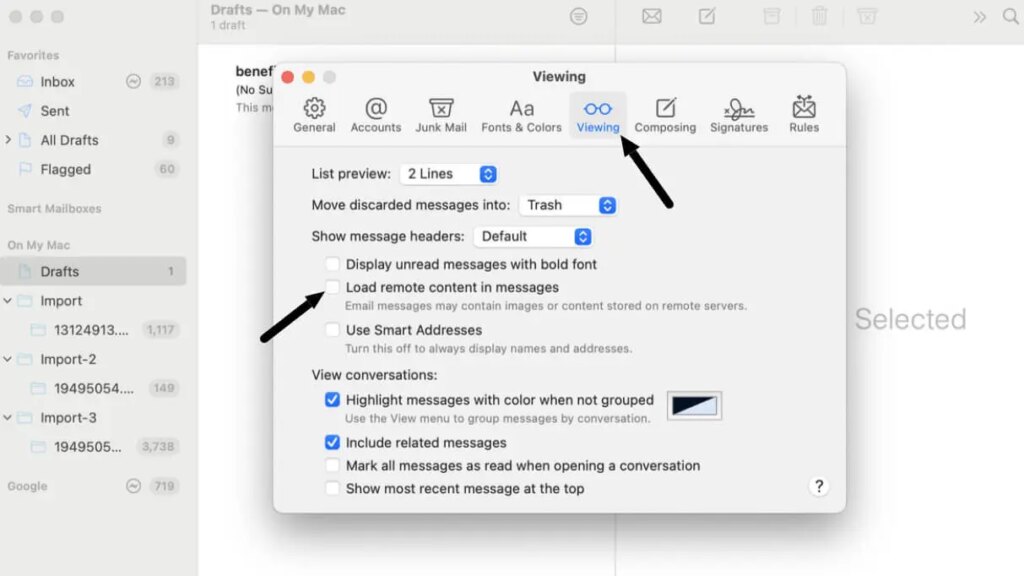
Gmail app (iOS/Android)
- Open the Gmail app on your gadget.
- Hit on the hamburger menu (three even lines) in the upper corner.
- Look down and select the “Settings” option.
- Hit on the record you wish to change.
- Look down and enter on the “Images“.
- Enter the Ask Before Displaying External Images (Also Disables Dynamic Email) option.
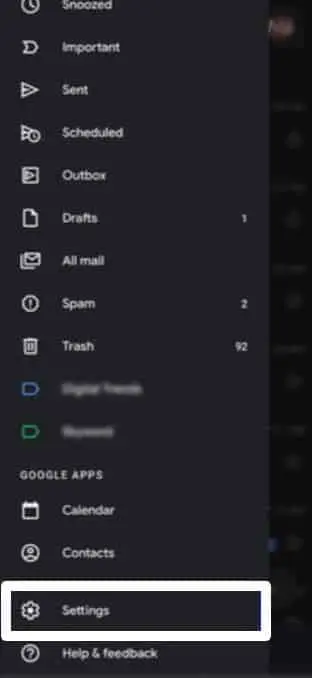
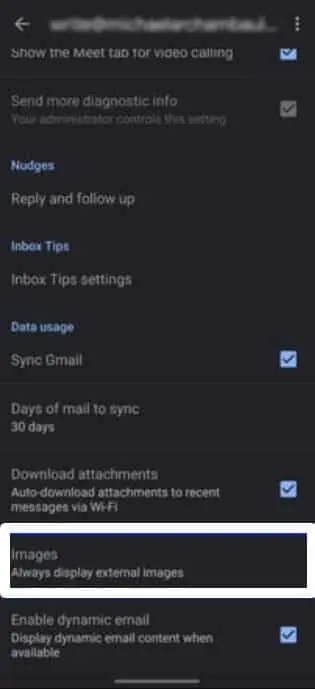
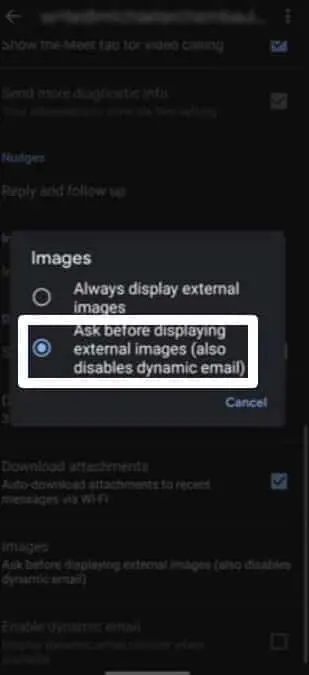
AOL.com
- Sign in to your AOL Mail account.
- Enter the “Options“, then hit on the “Mail Settings“.
- Choose “General“.
- Under the Reading category, select the Hide Images in Mail from Unknown Senders.
Yahoo.com
- Sign in to your Yahoo Mail account.
- Click the gear symbol in the upper-right corner, then at that point, hit on the More Settings.
- Enter the Viewing Email.
- Under the Show Images in Messages menu, select the Ask Before Showing External Images.

iCloud.com
- Sign in to your iCloud Mail account.
- Enter the gear symbol in the lower-left corner.
- Hit on the Preferences.
- Uncheck Load Remote Content in Messages.
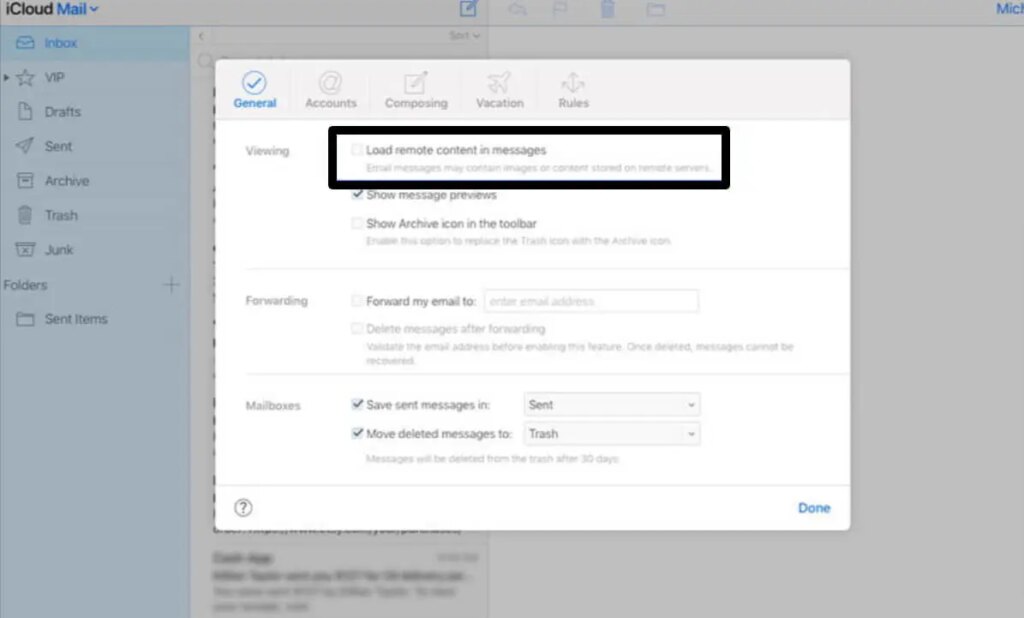
iOS Mail
- Open the Settings app.
- Look down and select the Mail.
- Under Messages, switch off “Load Remote Images“.
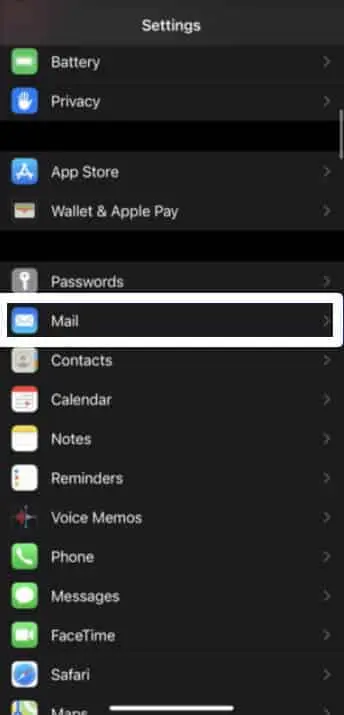
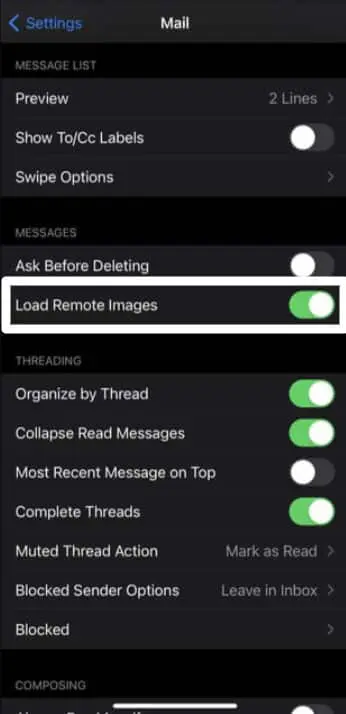
What extensions are available?
You can likewise download browser extensions that can secure your privacy by alerting you if an email incorporates a tracker. Our top proposal is PixelBlock for Google Chrome; it blocks pixel trackers and notifies you when any tracking endeavors are made.
A subsequent choice is “Trocker” for Google Chrome and Mozilla Firefox, which does likewise. Both of these extensions give quality online security to forestall email tracking.
Conclusion
Those unpleasant promoting emails that crowd your inbox aren’t simply promoting a product. They’re likewise tracking whether you’ve opened the email, when you opened it, and where you were at the time by utilizing software like Mailchimp to install tracking software into the message.
There is additionally a straightforward, essential advance you can take to stop email tracking: prevent your email from consequently loading images, since pictures are the place where most of these pixels hide. You will not have the option to stay away from each of the trackers that can hide in your email along these lines, however, you will stop a considerable lot of them.
Read more!
- Disable image loading in Gmail, Apple Mail, Outlook, and more!
- The best calendar apps to help with keeping the dates!
- Fixing iPhone Stuck on Black Screen with Spinning Wheel!
- Use extensions in the Photos app for iPhone- Make your Photos more fun!
- What are the best ways to protect the Apple Watch while working out?
















